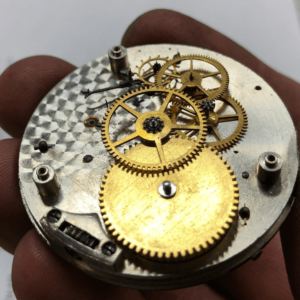Red Metal Material Highlight: Copper Machining
For over 10,000 years, humans have used copper for its many benefits, including thermal conductivity and corrosion resistance. Beyond its practical uses, copper possesses a distinctive beauty. As it ages, oxidation causes the material to develop a vibrant teal coating known as a patina.
But in the context of modern manufacturing, copper is a challenging material to machine. It’s both hard and malleable, and it’s prone to deformation when cut with certain tools.
Luckily, KAD has the capabilities and expertise to machine copper prototype models successfully. Today, we’ll review the basics of copper, so you know where to begin with this material.
Common Applications for Machined Copper
Due to its superior electrical and thermal conductivity, copper is suitable for a range of applications, such as:
- Electrical connectors
- Power transmission lines
- Battery and electrical terminals
- Heat sinks
- Machined busbars
- Gas line plumbing systems
- Home goods, including light fixtures, bed frames, and tea kettles
Common Types of Copper and Copper Alloys
Most copper and copper alloys belong to one of three grades:
High conductivity copper

High conductivity copper is considered a pure grade of copper, containing a minimum concentration of 99.3% copper (Cu). The most common type, electrolytic tough pitch (ETP) copper, contains 99.9% copper. It’s easily malleable with excellent ductility, making it ideal for electrical applications, such as wires, cables, and machined busbars.
Deoxidized copper
Certified oxygen-free coppers, like Copper 101, contain very little oxygen or other impurities. The absence of oxygen combined with the high-heat dissipation rate of deoxidized copper makes for a strong material that can withstand high-heat operations, such as brazing and welding. Low impurity levels make deoxidized copper a great choice for volatile applications, such as building construction, central heating systems, gas and water supply tubes, and roof sheeting.
Copper alloys
Combined with other elements to enhance properties like corrosion resistance and antimicrobial protection, copper alloys like these offer a range of benefits:
- Brass. A combination of copper and zinc, brass often appears yellow or red and is commonly used for various decorative applications. It reaches optimum heat resistance when the zinc content ranges from 32% to 39% and has greater strength and lower ductility when the zinc content exceeds 39%. Stay tuned for the next installment in the red metals series for an in-depth look at brass!
- Bronze. This copper alloy consists of approximately 88% copper and 12% tin and is typically golden with faint rings on its surface. It’s naturally corrosion-resistant and significantly harder than pure copper, so it’s perfect for sculptures, musical instruments, and medals. If you’re intrigued by this alloy, consider one of the many subgroups of bronze alloys, such as phosphor bronze and silicon bronzes, that offer greater tensile strength and fatigue resistance.
- Beryllium copper. Adding beryllium to copper produces a high-strength alloy with non-magnetic properties, ideal for metalworking, electrodes, and contacts. Sometimes brittle and difficult to work with, this copper alloy demands skilled prototype CNC machining that KAD is proud to offer.
- Tellurium copper. Softer than beryllium copper, tellurium copper is easier to machine and provides higher electrical and thermal conductivity. It’s an accessible copper alloy frequently used in electrodes, contacts, forgings, and screw machine parts.
Challenges of Machining Copper
While copper has many valuable properties, it’s not the most cost-effective material to work with. Machining copper prototype models can be expensive compared to working with more standard materials like aluminum. For this reason, its usage is typically limited to either those applications that require its electrical and thermal conductive properties or cosmetic applications that highlight copper’s natural beauty.
Part of the reason copper machining can be costly is that the material is difficult to work with Copper inherently lacks stability, which makes it more challenging to maintain certain features, such as flatness, that contribute to higher machining costs. There are workarounds for copper’s instability, but they often require machining more slowly and even purchasing additional material—more machining may be needed to ensure the final parts meet all specifications.
For a cost-effective alternative to copper, particularly in cosmetic applications, consider using copper plated materials instead.
Copper may be trickier than some materials, but at KAD, we love working with it. It’s an excellent material for electrical and heat-related applications. If you need a copper prototype model, request a quote from the copper experts at KAD today!


